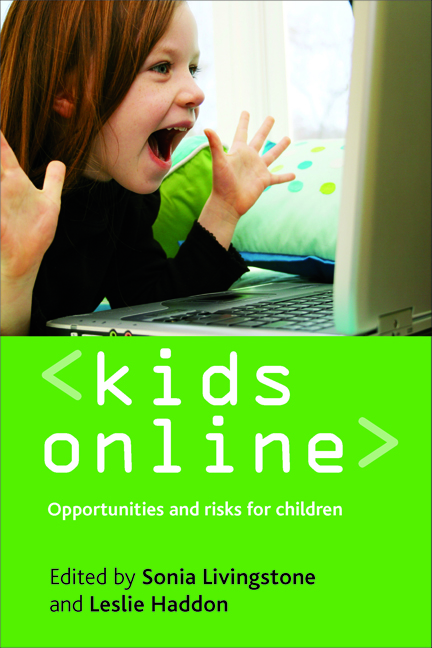Book contents
- Frontmatter
- Contents
- Notes on contributors
- Acknowledgements
- one Introduction
- Section I Researching European children online
- Section II Going online: new opportunities?
- Section III Going online: new risks?
- Section IV Policy implications
- Appendix A List of country codes
- Appendix B Children and parents online, by country
- Appendix C The EU Kids Online network
eleven - Inappropriate content
Published online by Cambridge University Press: 15 July 2022
- Frontmatter
- Contents
- Notes on contributors
- Acknowledgements
- one Introduction
- Section I Researching European children online
- Section II Going online: new opportunities?
- Section III Going online: new risks?
- Section IV Policy implications
- Appendix A List of country codes
- Appendix B Children and parents online, by country
- Appendix C The EU Kids Online network
Summary
Introduction
Use of the internet and its associated services is becoming an increasingly popular pastime, particularly among children and young people, but despite the many benefits offered there are also risks which they must be made aware of. The possibility that children could encounter inappropriate content online receives less public attention than the risk that they may make risky contact with people met online, and the range of content that is of potential concern is vast, including pornography, racist material, violent and gruesome content, self-harm sites (including pro-anorexia and pro-suicide sites), commercially exploitative material and more. The European Commission (EC) supports Safer Internet hotlines throughout Europe where people can anonymously report what they perceive as illegal or disturbing content (EC, 2009). Thirty-four hotlines across the globe are members of the International Association of Internet Hotlines see (www.inhope.org).
This chapter focuses on children and young people's access to inappropriate content online. The term ‘inappropriate content’ is not a well-defined term and one can find variations across generations and across countries and cultures. Content that seems inappropriate from an adult's perspective may not be perceived in the same way by children and young people. Furthermore, cultural differences may influence how we understand and categorise different types of content. This blurry middle ground can contain sexual content, for example, as it is hard to achieve consensus on what is pornography and what is sexual information or portrayal. On the other hand, certain content is universally classified as inappropriate for children in all cultures – for example the depiction of graphic violence or sexual abuse, and encouragement to harm one's self or others. Furthermore, some content can be classified as illegal (thus inappropriate), such as violent or sexual acts against children, and the promotion of racism and xenophobia.
The EU Kids Online network categorised the different types of inappropriate content and risks that children can encounter online (Hasebrink et al, 2009), as presented in Chapter One (this volume). The classification is based on the role of the child (as recipient, as participant or as actor) and the motives of the provider (commercial, aggressive, sexual and values-related). The aim of this chapter is to provide a description of the empirical evidence available within the EU Kids Online network, and where appropriate within the wider literature, regarding inappropriate material encountered by children online.
- Type
- Chapter
- Information
- Kids OnlineOpportunities and Risks for Children, pp. 135 - 146Publisher: Bristol University PressPrint publication year: 2009



